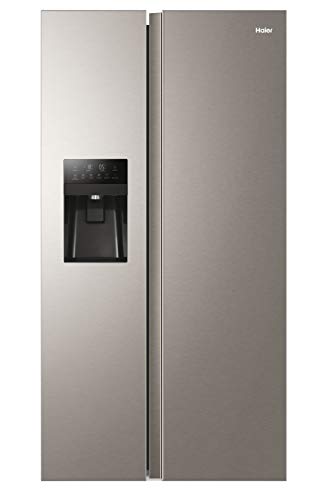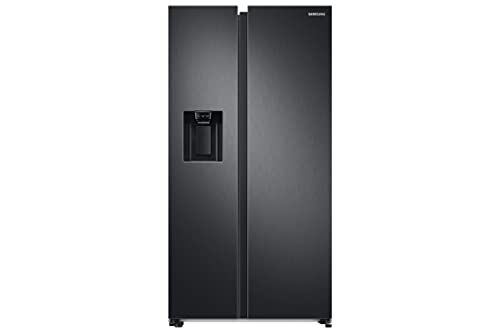본문
Five Killer Quora Answers On Refridgerator UK
 The History of the Refrigerator
The History of the RefrigeratorThe traditional refrigeration of food items produces significant greenhouse gas emissions because of leakage of refrigerant and electrical power consumption. In 2019, these emissions made up 3.2 percent of the total UK territorial GHG emissions.
The summer of 1959 was the first time that fridges became common in British homes. Prior to this, most households relied on cold slabs that were placed in pantries. These were inefficient and did not keep a constant temperature.
The History of Fridges In The UK
Refrigerators are among the most essential kitchen appliances, allowing us to keep food and drinks fresh for a few days at an time. They're also incredibly energy-efficient. It's easy, though, to forget that refrigerators were once a luxurious product. In reality it wasn't until the 1950s that they started to become popular. It was a very hot British summer that led to their popularity.
Before refrigerators were invented, people would use cold ice boxes that were insulated to keep their foods cool. In the winter they would collect blocks of ice on lakes and keep them in storage for warmer months. However, the ice boxes weren't ideal. They were heavy and had to be carried by an "ice man". The first electric refrigerators came in 1918, but it was some time before they became commonplace in homes.
The efficiency of fridges has increased dramatically over the years. They consume less energy than they did 10 years ago. Some refrigerators consume only 4 kW*h per day (equivalent of 170 W continuous). A majority of refrigerators in the US come with an energy rating of A+.
Early in the 1950s, manufacturers began to introduce refrigerators that had separate compartments for freezers. They also began producing models with a chrome finish which was extremely popular at the time. Since then, fridges have been available in a variety of colours and finishes. In the 1960s, pastel colors like turquoise and pink were very popular. Earth tone colors such as almond and avocado green became more popular in the 1980s and the 1970s. In the early 1990s stainless steel was beginning to take over.
Fridges in the 1920s
Before refrigerators, people used wooden and insulated "ice boxes" to store fresh food and beverages. Icemen would bring blocks of frozen ice to fill them, and they'd keep things cool all year round. Ice boxes were typically found in the kitchens of wealthy families.
In 1918, the first electric refrigerator was introduced. It sat atop of the ice box that was already in a house. They were heavy noisy and expensive. The motor was on top of the cabinet. They were also referred to as monitor-tops. William C. Durant purchased the Mellowes Refrigerator Company in 1918, and set up the Guardian Frigidaire to mass-produce refrigerators. Durant was inspired by a design by Cistercian Monk Marcel Audiffren, and Swiss Engineer Albert Singrun. This was an absorption refrigerator, using sulfur dioxide as a refrigerant.
In the 1920s, these modern refrigerators were reasonably priced for many homes. They were able to accommodate more food and drinks, and kept it colder for longer than old ice boxes.
Advertising on refrigerators was imaginative, enticing and filled with promises of ice cold drinks and chic designs. These ads from the past are fascinating to read because they provide us a glimpse into the life of that time.
By the end the 1920s, refrigerators with electric power were commonplace in homes. Electric utilities helped promote this trend by offering rebates on their bills to those who bought refrigerators. The popularity of refrigerators grew even faster during the Great Depression when they were considered vital to the survival of the home.
Fridges in the 1950s
The popularity of refrigerators increased in the 1950s. They were still uncommon in the 1920s. In the late 1960s, you could find them in most homes (although it is worth noting that you wouldn't find a refrigerator in every household in the early days, since this was a costly luxury for many).
Early refrigerators were utilitarian, simple appliances that matched kitchen decor. The refrigerators were typically smaller and had legs. They were available in a variety of colors (though most were pastels such as mint). During this period, there were a number of companies manufacturing fridges that included Whirlpool (who had just made a splash as a leading brand), Gibson, Hotpoint and Tappan.
All of these brands were famous for their reliable, high-quality refrigerators. They also diversified their product lines, providing other types of appliances for homes. For instance, Crosley was a manufacturer of radios before moving into refrigerators in the 1940's and were known for their small refrigerators that fitted well in smaller areas.
In the 1950's, fridges became more stylish and were advertised as an emblem of status for housewives. They were designed in a way that was in line with the cabinets and the walls of the kitchen and were typically white with chrome handles.
In the 1960s refrigerators began to evolve into gadget-driven appliances with features like separate freezer sections and ice cube makers. In addition, manufacturers began to use cheaper materials and were able to offer the fridges at lower costs.
Fridges in the 1960s
In the 1960s, fridges became a necessity in many households. Some families even had two refrigerators. They were costly for a time - in America the average refrigerator cost $600 (that's about $7000 in 2024 dollars) However, by the end of the 60s they had dropped to $200.
The refrigerator was a significant technological advancement at the time, revolutionizing kitchens and transforming the way we preserved food. The fridge also increased home comfort since it helped keep meat and dairy fresher for longer, which allowed people to buy in bulk and prepare meals in advance and store them for later.
The first fridges were made of harmful gases like ammonia, methyl chloride and sulfur dioxide to cool food, but this was hazardous for humans because these gases escaped from refrigerators. In 1929, carbon dioxide was introduced as a safe method of cooling food. A number of people were poisoned and passed away.
This means that manufacturers were able to design more efficient and safer refrigerators that could be used in homes, with certain refrigerators having an internal freezer compartment that was accessed through the refrigerator's door. These were known as bi-door refrigerators and were very popular during the 1950s and 60s.
The 1960s fridges were sleeker and more futuristic. They had soft curves, and a sleek look that reflected an era of efficiency and home freedom. They were still relatively large fridge freezers uk, but the boxy look of refrigerators from the 1940s was beginning to decline.
Refrigerators Today
Today's fridge freezers come in a wide range of styles, colors and finishes that can be adapted to your the personal taste and interior of your kitchen. Some fridge best price freezers have smart features that connect to Wi-Fi. This lets you quickly customize the settings. Others even have an integrated camera to look inside your refrigerator.
French door models dominate the market as consumers seek out modern features and appearances like water or ice dispensers and flex drawers. In some cases smart screens are included. A lot of these appliances are classified as A B, A or even A+ for energy efficiency, following the revamping of the mandatory labelling system in Refridgerator Uk appliances.
We love this Hotpoint model due to its sleek design, which includes a clever UVNano technology that self-sterilises the fridge to kill bacteria and a pair of salad drawers that have adjustable humidity sliders. It's also spacious with plenty of storage space for bottles and jars and a generous utility box that fits inside the door of the fridge.
Refrigerators without an ice tray of the traditional type could consume four times more energy than those with ice makers, so look for one with an environmentally friendly ICE+ option that uses much less energy. You can also save money by choosing one that comes with an automatic ice maker. This will ensure an ongoing supply of ice, ready to be used in the morning.
 Buying a fridge that's A or A+ in energy efficiency is one of the most beneficial things you can do for the environment. When selecting a refrigerator it is recommended to include the annual electricity consumption of the fridge freezers uk into your household budget. It is important to remember that we can't afford to put electricity on the back burner. Everyone deserves access to affordable, reliable and plentiful electricity to live a healthy life, be comfortable, and help protect the earth.
Buying a fridge that's A or A+ in energy efficiency is one of the most beneficial things you can do for the environment. When selecting a refrigerator it is recommended to include the annual electricity consumption of the fridge freezers uk into your household budget. It is important to remember that we can't afford to put electricity on the back burner. Everyone deserves access to affordable, reliable and plentiful electricity to live a healthy life, be comfortable, and help protect the earth.댓글목록
등록된 댓글이 없습니다.
댓글쓰기